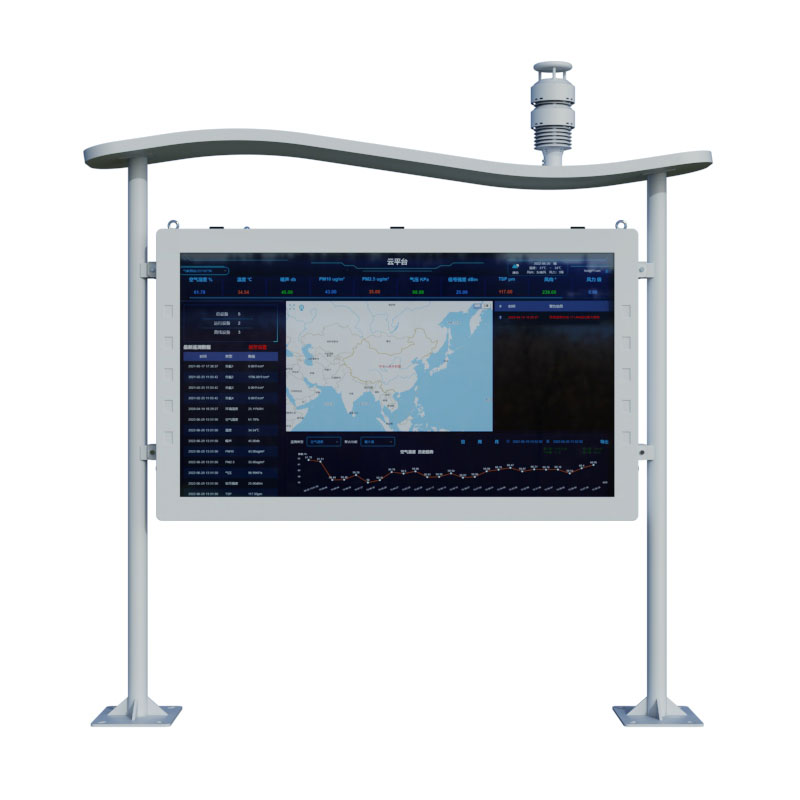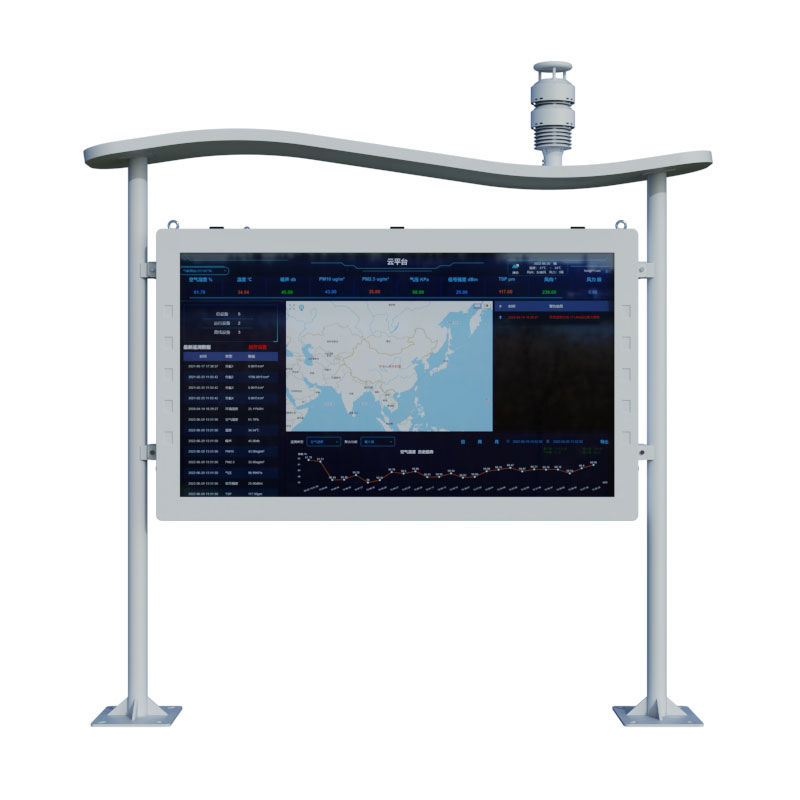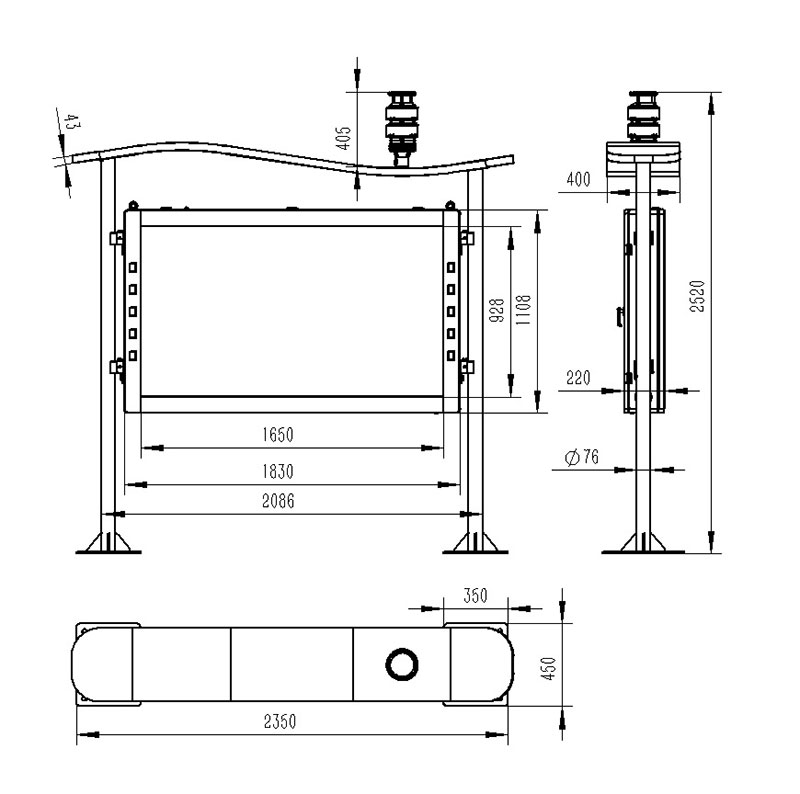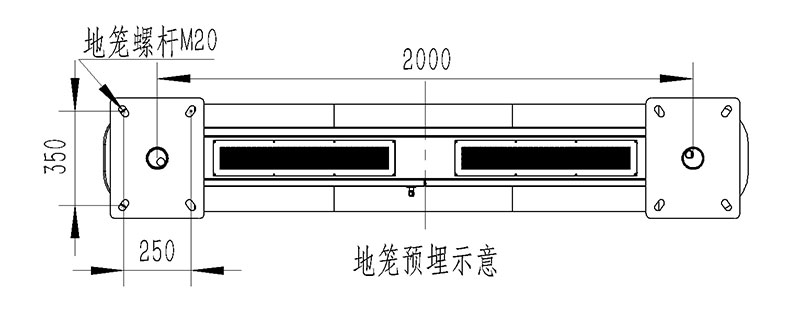Tianqiong Sensor IOT Technology Co., Ltd
Sales Manager:Ms. Emily Wang
Cel,Whatsapp,Wechat:+86 15898932201
Email:info@fengtutec.com
Add:No. 155 Optoelectronic Industry Accelerator, Gaoxin District, Weifang, Shandong, China

Sales Manager:Ms. Emily Wang
Cel,Whatsapp,Wechat:+86 15898932201
Email:info@fengtutec.com
Add:No. 155 Optoelectronic Industry Accelerator, Gaoxin District, Weifang, Shandong, China

Model:FT-FZ5
Brand:tianqiong
1.Product introduction of Negative oxygen ion monitoring system
negative oxygen ion monitoring system uses a negative oxygen ion measurement unit to accurately measure the negative oxygen ion content in the air.Negative oxygen ion monitoring system can monitor the concentration of negative oxygen ions in the air all day long, and can also expand monitoring projects according to user needs, such as: air temperature, air humidity, PM2.5, PM10, atmospheric pressure, oxygen content, noise, wind speed, wind direction and other meteorological factors.Integrated sensor design, no mechanical displacement, high accuracy and long service life
Data can be read through the full-color LCD screen on site, and data can be viewed in real time on the remote cloud platform/WEB/WeChat official account.
Live users can customize the songs and can also broadcast the voice over the label.
2.Negative oxygen ion monitoring system application scope
Tourist scenic spots, ecological manors, wetland parks, waterfall parks, forest parks, nature reserves, sales offices, schools
3.Negative oxygen ion monitoring system technical parameters
1.Wind speed: measurement principle ultrasonic wave, 0~60m/s (±0.1m/s) resolution 0.01m/s
2.Wind direction: measurement principle ultrasonic wave, 0~360° (±2°) resolution 1°
3.Air temperature: measurement principle diode junction voltage method, resolution of 0.01°
4.Air humidity: measurement principle capacitive type, 0-100%RH (±0.3%RH) resolution 0.1%RH
5.Atmospheric pressure: measurement principle piezoresistive type, 300-1100hpa (±0.25%), resolution 0.1hpa
6.PM2.5: Measure the principle light scattering, 0-1000ug/m3 (±10%) resolution 1ug/m3
7.PM10: Measure the principle light scattering, 0-1000ug/m3 (±10%) resolution 1ug/m3
8.Noise: measurement principle capacitive type, 30-120dB (±1.5dB) resolution 0.1db
9.Negative oxygen ions: Measurement principle cylindrical electrode suction type, 00,000 to 100,000 units/cm³ (±10%) resolution 1 unit/cm³
10.Oxygen content: measurement principle electrochemistry, 0~25%Vol (±3%FS) resolution 0.1%
11.Screen: resolution 1920 (RGB) × 1080 (FHD), operating frequency 120Hz, brightness 1500-2500 cd/m2
12.Upright pole: carbon steel double columns, can withstand strong typhoons of level 15
13.Working environment: temperature -40℃-60℃, humidity 0%-100%
14.Data storage: can store one year's original monitoring data
15.Data transmission: 4G/optical fiber
16.Power supply method: 220V municipal power
17.Power consumption: 500w
4.Product features of Negative oxygen ion monitoring system
1.The whole machine adopts a highly integrated modular design and standardized electrical design.The working status is clear at a glance and can achieve rapid maintenance.
2.Waterproof: The main structure uses 2-3mm carbon steel, combined with composite sealing strips, to achieve multi-angle waterproofing
3.Dustproof: The bottom of the equipment is equipped with a filter device, which can filter dust particles above 5μm.At the same time, the filter cotton can be quickly replaced from the outside without professional operation.
4.Lightning protection and leakage protection: There are lightning protection devices and leakage protectors inside to protect the safety of the machine and surrounding people
5.Adopt high-transparency, high-temperature and high-strength tempered glass, fire-proof, scratch-proof and explosion-proof
6.Speaker: Outdoor high-power waterproof speaker, dual-channel design, clear and three-dimensional sound
7.Built-in photosensitive probe can effectively identify light changes and automatically adjust screen brightness
8.The display screen uses LED backlight, with a lifespan of 50,000 hours, high environmental protection, energy saving, dynamic contrast, and clearer display screen
9.The cooling system adopts industrial-grade eddy current centrifugal fan, with large air volume, high speed and low noise.It has a built-in temperature sensor sensor device to effectively identify internal temperature changes.At the same time, it can adjust the response temperature and response speed according to the on-site environment to achieve accurate temperature control of low energy consumption.
10.Built-in time control switch, can set the predetermined turn-on and turn-off time
11.Full color display interface, the device automatically enters the meteorological monitoring platform when it is turned on (the display screen supports limited customization)
12.Optional camera, display interface can synchronize the camera screen
13.Integrated sensor, integrated sensor, easy installation and simple maintenance
5.Negative oxygen ion monitoring system product structure diagram

6.Negative oxygen ion monitoring system product size diagram


7.Introduction to Negative oxygen ion monitoring system cloud platform
1.CS architecture software platform, supports direct observation of mobile phones and PC browsers without additional software installation.
2.Support multiple accounts and multiple devices to log in
3.Support real-time data display and historical data display dashboard
4.Cloud server and cloud data storage are stable and reliable, easy to scale, and load balancing.
5.Support SMS alarm and threshold settings
6.Support map display and viewing device information.
7.Support data curve analysis
8.Support data export table form
9.Supports data forwarding, HJ-212 protocol, TCP forwarding, http protocol, etc.
10.Support data post-processing function
11.Support external running of javascript scripts
12.Support synchronous local weather forecasts
When traditional mechanical weather stations monitor wind speed and direction, they encounter a difficult problem. The wind speed sensor usually consists of wind cups and an axis, and the wind direction sensor relies on mechanical components such as a wind vane. When these mechanical components are...
The Ultrasonic Wind Speed Direction Sensor achieves measurement based on the characteristics of ultrasonic waves propagating in the air. It accurately calculates the wind speed and direction by measuring the time difference of ultrasonic waves propagating in different directions. This non-mechanical...
China has a vast territory with complex and diverse geographical environments and significant differences in climatic conditions. As a crucial link for power transmission, transmission lines inevitably traverse special geographical areas such as valleys, high - altitude peaks, and rivers. These spec...
In contemporary society, air quality is intricately intertwined with our daily lives. Air pollution not only takes a toll on our physical well-being but also exerts adverse effects on the ecological environment and economic development. Globally, air pollution has given rise to a surge in respirator...